CMEA Magazine















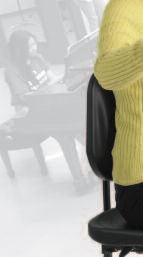








Acoustic Products
Audience Seating
Conductor’s Equipment
Marching Band Products
Music Chairs
Music Stands
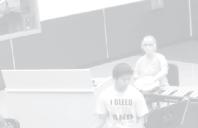




Whether you’re building a new music suite or just adding or replacing equipment, the experience is always easier with Wenger.





ching P Mar P product insight educ



hether y W roducts roducts s no other re ators all enge ays W Wenger eplacing eou’r s and service an match. Our focused underst source c s er.
Risers, Staging & Platforms
Sound Isolation Solutions
Storage Products
Teaching Tools
Our seventy years of experience with educators all around the world has given us insights no other resource can match. Our focused understanding of customer needs allows us to provide innovative, high-value products and services that enable and inspire great performances. Today we have the industry’s most trusted product line, designed to enhance, empower, and embolden music educators.
s that enable and s anding
Theatr Stor Platf rage P e power empower per Please vi e! roducts e P heatr ools eaching T Tools T roducts ageor orms ng & Platfforms isit st suit stimate a vision that be ful fur we’ve , and embolden music educ oday s. T de formance s ther ators. , and embolden music educ signed
Theatre Products and More!


In addition, we’ve just launched a powerful new website experience to further enhance your ability to develop and estimate a vision that best suits your space and budget. Please visit today!


















POSTMASTER
CMEA Magazine (ISSN 1099–6710) is published quarterly (Fall, Winter, Spring, Summer) by CMEA
Mailing Address: 9923 Hirondelle Lane, Tujunga, CA 91042–2605
Periodical postage paid at Tujunga, CA and at additional mailing offices
Subscription price of $4 00 is included in the CMEA annual dues Non-member subscription rate is $12 00 per year Single copies are $3 00
POSTMASTER: Send address changes to CMEA Magazine, 9923 Hirondelle Lane, Tujunga, CA 91042–2605
CMEA Magazine
Art Director/Business Manager: Allen Petrinka
Mailing Address: 9923 Hirondelle Lane Tujunga, CA 91042–2605
Voice:
818 353– 3356
E-mail: cmeamagazine@dslextreme com
Rates and advertising information available at: www calmusiced com
The Executive Board of CMEA serves as the Editorial Committee
The observations and opinions expressed in any article in this magazine are those of the author and do not necessarily represent the official position of the Association CMEA does not necessarily endorse any product or service advertised in this magazine
CMEA Administrative Office
Mailing Address: 2417 North 11th Avenue Hanford, CA 93230
Office: 559 587–2632 Cell: 559 904–2002
E-mail: cmea@calmusiced com Website: www calmusiced com
• President’s Message: CommUNITY by CMEA President Scott Hedgecock
• Victory! VAPA Standards Update by CMEA President Scott Hedgecock
• EdSource Article: Bill Proposes Review of California’s
by Susan Frey
• Help! I Need to Get My Jazz Band Ready for Festival by Barb Shinaver, CMEA
• Bay Section Happenings by Rita Zigas-Brown, CMEA Bay Section President
• Repetition: The Most
On the Cover : CASMEC Featured Per formances in San José on Februar y 16–19, 2017 (clockwise from top left: Westlake High School Studio Jazz Ensemble, under the direction of Brian R Peter, director of bands; Cathedral City High School Symphony Band, Matthew K. Howe, director of bands; Piedmont Hills High School - The Treblemakers, Myles Ellis, choral director; Hopkins Junior High School Advanced Orchestra, Gregory Conway, director of instrumental music; Clovis North Educational Center W ind Ensemble, David Lesser, director of bands; University of Redlands - Bel Canto, Joseph Modica. associate professor of music; MiraCosta College - Frequency, Matt Falker professor of piano and vocal jazz









































President’s Message
by Scott Hedgecock CMEA President
is a communit y We are educators, instr uctors, directors, counselors, life coaches, and sometimes second parents to hundreds of students daily in thousands of c lassrooms communities… ever yday. We make a difference.
And when we come together we form a commUNIT Y that concentrates on the educator and their needs for professional development, networking, and having the oppor tunit y to experience and celebrate some of the best in our state through performances in sessions, concer ts, and fif teen all-state honor ensembles
1 a: a unified body of individuals: a group linked by a common policy:
b: a body of persons or nations having a common history or common social, economic, and political interests:
c: a body of persons of common and especially professional interests scattered through a larger society
2 society at large
3 a: joint ownership or participation:
b: common character: (likeness, (community of interests):
c: social activity (fellowship):
d: a social state or condition
The California All-S tate Music Education Conference (CASMEC) is our big once-a-year par t y. F ive professional music education organizations create communit y to present ever ything new, current and timely, and inspiring in music education. My admiration and thanks to the California Alliance for Jazz, the California American Choral Directors Association, the California Band Directors Association, and the California Orchestra Directors Association who all bring phenomenal sessions in each of our
Continued on page six
CMEA EXECUTIVE B OARD
CMEA President Scott Hedgecock shedgecock@calmusiced com 714 626-3984
CMEA President-Elect John Burn jburn@calmusiced com 408 522-2541
CMEA Vice President Diana Hollinger dhollinger@calmusiced com 408 924-4631
CMEA Secretary Sandra Lewis slewis@calmusiced.com 408 806-5550
CMEA Immediate Past President Michael D Stone meuph@att.net 661 631-4810
CMEA OFFICE
E-mail: cmea@calmusiced com 2417 North 11th Avenue Hanford, CA 93230 559 587-2632
CMEA Executive Administrator
Trish Adams cmea@calmusiced.com 559 904-2002
CMEA Legislative Advocate Lynne Faulks consultLF@gmail.com
SECTION PRESIDENTS
CMEA Bay Section President Rita Zigas-Brown rzigas brown@gmail com 925 944-6840 x8622
CMEA Capitol Section President Santiago Sabado ssabado@eduhsd net 530 350-6289
CMEA Central Section President Kirk Clague clague cmeacentral@icloud com 559 592-2127 x391
CMEA Central Coast Section President Christy Latham clatham@sccs net
CMEA North Coast Section President Dan Sedgwick dsedgwick@delnorte k12 ca us 707 4645-0274
CMEA Northern Section President Michael Phenicie phenicie@frontiernet net 530 458-21561
CMEA Southeastern Section President Armalyn De La O adelao@csusb edu 909 838-3716
CMEA Southern Border Section President Marc Dwyer mdwyer@sandi.net 619 222-0476
CMEA Southwestern Section President Dr Alexander Koops akoops@apu edu 626 815-6000 x3583
NAf ME OFFICERS
NAf ME President Denese Odegaard 1806 Robert Fulton Drive, Reston, VA 22091 800 336-3768
NAf ME Western Division President Russ Sperling rsperli@cox.net
COUNCIL OF REPRESENTATIVES
CMEA CA ACDA Representative W illow Manspeaker wmanspeaker@stevensonschool.org 831 625-8339
CMEA CAJ Representative Barbara Shinaver barbshinaver@gmail com 559 451-4320
CMEA CASMEC Coordinator/CMEA Representative on the CBDA Board Bill W ilkinson bwilkinsoncmea@gmail.com 559 585-3881
CMEA CBDA Representative Adam W ilke awilke75@sbcglobal.net 510 471-2510 x60216
CMEA CODA Representative Donna Harrison harrison donna3@gmail com 209 613-8273
CMEA Advocacy Day Performance Coordinator Phil Vallejo philvallejo@gmail.com 559) 250-1412
CMEA Advocacy Day Public Relations Coordinator Mario Sebastian msebasti@egusd net
CMEA Advocacy Representative Steve Venz stevenvenz@yahoo.com 714 966-4000
Collegiate Council Representative Lauren Culley lrculley@gmail com 408 440-6931
CMEA Collegiate Representative Dr Dennis Siebenaler dsiebenaler@fullerton.edu 657 278-3510
CMEA Creating and Composition Representative Dr. Lisa A .Crawford lisacrawfordmusic@gmail com 310 863-6422
CMEA CTA Liaison Nora Allstedt nallstedt@gmail com 559 592-9421
CMEA Elementary Representative Coralie Prince coralie prince@gmail com
CMEA General Music Representative Richard Lawton richard@richardlawtonmusic com 323 654-4401
CMEA Higher Education Representative Dr Emily Moss Emily Moss2@calstatela edu 323 343-4086
CMEA IN-ovations Representative Anne Fennell annefennell@mac com 760 310-2392
CMEA Membership Chairperson Ryan Clippinger Ryan Clippinger@kernhigh org 661 854-5561 x70701
CMEA Mentorship Program Chairperson Mark Nicholson mnicholson@sandi net 858 256-2702
CMEA Music Supervisors Representative Phil Mortensen pmortensen@pylusd org 714 986-7024
CMEA Music Technology Representative Tamara T Thies, Ph D tamara thies@csulb edu
CMEA Research Representative Dr Ruth Brittin rbrittin@pacific edu 209 946-2408
CMEA Retired Members Representative Position open as of June 9, 2016.
CMEA Special Learners Representative Angela Holmes Holmesangie@yahoo.com
CMEA Special Projects Representative Russ Sperling rsperli@cox net
CMEA State Band and Orchestra Festival Coordinator Keith Johnson keith@echsbands com 510 231-1437 x26418
CMEA State Choral Festival Coordinator Nancy Ludwig nancyludwig6@gmail.com 626 443-6181 x5895
CMEA State Solo and Ensemble Festival Coordinator Cheryl Yee Glass cglass@srvhs org 925 552-3044
CMEA Tri-M Representative Troy Trimble troyatrimble@gmail.com 714 626-3975
CMEA Urban/Rural Schools Representative Dr. Lawerence F. Stoffel stoffel@csun edu 818 677-3160
CMEA World Music Representative Dr Lily Chen-Hafteck lhafteck@ucla edu 310 825-4668










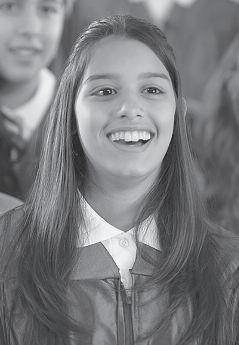























E-mail David C “Lucky” Harms for your nationally competitive school bid quote today: lucky@nickrailmusic com

continued from page three
discipline specific areas, and CMEA that presents the many overarching areas of interest that are so vitally impor tant to ensuring the inc lusion, diversit y, equit y, and access for all students to music education And this is what leads to success in our music programs in our schools
Each of you will be looking to find those areas of interest at CASMEC that will provide you with a greater knowledge to better your teaching, both in your discipline specific area and in those areas that reflect our student populations and therefore connect us all. I encourage you to also inc lude the many oppor tunities to be par t of the greater commUNIT Y at CASMEC:
CASMEC highlights from CMEA CMEA Council of Representatives: Each • of the near ly for t y representatives to the CMEA S tate Council present a brief over view of impor tant and exciting information from their area of exper tise O bser vers are more than welcome to come and learn more about the roll that the Council of Representatives plays in the
leadership of CMEA
O ur traditional areas of general music,
CMEA General S ession: All of CMEA’s
• accomplishments of the past year will be highlighted, the most up-to-date national news in music education will be presented, and the revised CMEA S trategic P lan will be unveiled You will be able to put live faces and voices to the names of CMEA’s elected leadership Numerous guest speakers will also highlight our session
• music technolog y, wor ld music, advocac y, and special learners continue to be offered in expanded roles.
New for 2017 are sessions in r ural and
• urban schools, IN-ovations (new and emerging ensembles), creating/composition, and a complete collegiate strand.
In addition, CMEA will offer a select
CMEA Gala Awards: O ur “One-Night-
• Only” celebration of the best in our commUNIT Y We come together to enjoy a meal and to honor our award recipients for this year
All-Conference S ocial: New to CAS-
• MEC this year All of the organizations are working together to make CASMEC a communit y of music education entities, and we will celebrate this commUNIT Y with an All-Conference S ocial
CMEA will continue to feature a diverse offering of sessions that cover those areas that are integral to ALL music education disciplines:
• number of sessions with repeated presentations to facilitate more CASMEC attendees to attend and par ticipate in all areas of music education
CMEA will again sponsor a mini-confer-
• ence for TK–5th grade teachers entitled “JAM! Just Add Music!” to help the generalist teacher to integrate music into their c lassrooms
P lease review the conference highlights in this issue, and make your plans to get the most out of your CASMEC experience I look for ward to seeing ever yone in S an José this Febr uar y.

Submitted by Scott Hedgecock
n S eptember 26, 2016, the Honorable Edmund G Brown, Jr , California S tate Governor, signed AB 2862 into law
AB 2862 (O’Donnell) Pupil instr uction: visual and performing ar ts: revision of content standards.
The CMEA co-sponsored bill to Revise our V isual and Performing Ar ts S tandards is now a realit y
How did we get here?
2012: CMEA comes back to life with the launch and implementation of a strategic plan. Advocac y is one of four essential organizational goals in that plan. A small group of music educators convene in S acramento and visit legislators to talk about the impor tance of music education in our schools
O ut of this humble beginning the CMEA sponsored S tand Up 4 Music Coalition is born
2013–2014: S tand Up 4 Music takes the lead in creating an annual Music Education Advocac y Day in S acramento. The event becomes highly organiz ed, str uctured, and becomes a strong voice in S acramento
2015: CMEA takes a leap of faith and sponsors a legislative bill to update our VAPA S tandards SB725 is our first journey into the political arena We succeed in having unanimous suppor t from both the S tate S enate and the Assembly, but fall victim to the legislators need to have a “perfect bill” for a last minute piece of legislation. We learned more, the hard way, about how our state government works
2016: CMEA focuses on promoting the National Core Ar ts S tandards as a viable tool for all music educators, and then we are approached by Assemblymember Patrick O’Donnell (District 70) to bring back our standards bill. We par tner with our colleagues in the California Ar t Education Association (CAEA) and co-sponsor AB2862 Once again, we sail through the various levels of legislative process and in the end are sent to the governor ’ s desk with unanimous suppor t S eptember 26, 2016: Governor signs AB2862
And now the work begins.
The “ unofficial” timeline (as of the writing of this ar tic le in November) is as follows:
November 2016–Januar y 2017: California Depar tment of Education (CDE) will take to the S tate Board of Education (SBE) the recommended VAPA timeline for developing new standards.
Januar y 2017: Focus Group meetings throughout the state
Apr il–June 2017: Accept applications for the S ubject Advisor y Committee (SAC) which will be responsible for writing/revising standards
October 2017–March 18, 2018: SAC meets five times
Januar y 2019: Present S tate Board with new VAPA S tandards to be approved.
CMEA and our par tner organizations in dance, theatre, and visual ar ts are working in concer t to ensure that California has outstanding guidelines for us to use in our teaching The leaders of the California Ar t Education Association (CAEA), the California Dance Education Association (CDEA), and the California Educational Theatre Association (CETA), meet once a month and have built a strong new Coalition the 4Ar tsEdOrgs that work together to promote ar ts education for all students in our schools
The 4Ar tsEdOrgs worked tirelessly to suppor t both AB2862 and SB916 (reinstatement of the single subject credential for both theatre and dance). We were successful with both bills, as the governor signed them at the same time.
We are our strongest when we work in UNIT Y
Why Revise our Standards?
One of the easiest ways for us to respond to this question during this long process was to take out our cell phones. We would respond with “ how of ten did you use this to access music (or any form of the ar ts) in 2001?” The advancement of technolog y to access the ar ts is a huge reason in itself to suppor t the belief that our VAPA S tandards must be revised
The following ar tic le, an inter view with Armalyn De La O, was first published in EdS ource in the May 3, 2015, issue. The author, S usan Frey, has given us permission to reprint that ar tic le here. Although the references are to our first attempt at a standards bill in 2015 (SB725), the ar tic le gives us a c lear picture of why we are moving in this direction, not just as CMEA but also as the 4Ar tsEdOrgs Coalition, for the benefit of all students and ar ts educators in California
P lease note that Armalyn De La O is now the president of CAEA, and also the president of the CMEA S outheastern S ection and ser ves on the CMEA S tate Board of Directors In addition, Ms De La O was one of the writers for the National Core Ar ts S tandards
1947–1949
Clarence Heagy Fresno
1949–1951
Elwyn Schwartz
1951–1953
George F Barr
1953–1955
Fred Ohlendorf Long Beach
1955–1957
Harold Youngberg Oakland
1957–1960
Joseph W Landon Fullerton
1960–1962
Douglas Kidd
1962–1964
Gibson Walters San José
1964–1966
Keith D Snyder Davis
1966–1968
Kenneth D Owens
1968–1970
Judd Chew Sacramento
1970–1972
Anthony L Campagna Foster City
1972–1974
Louis Nash La Crescenta
1974–1976
Marlow Earle Lakewood
1976–1978
Mary C Reed Elk Grove
1978–1980
Henry Avila Monterey
1980–1982
Charles L Freebern San Diego
1982–1984
David S Goedecke Stockton
1984–1986
Vivian M Hofstetter Bakersfield
1986–1988
John L Larrieu Portola
1988–1990
L. Leroy Roach Walnut Creek
1990–1992
Carolynn A Lindeman Greenbrae
1992–1994
Bill Adam Roseville
1994–1996
Don Doyle Pasadena
1996–1998
Jay D Zorn La Crescenta
1998–2000
Dennis L Johnson Salinas
2000–2002
George DeGraffenreid Fresno
2002–2004
Sam Gronseth Paradise
2004–2006
Rob Klevan Pacific Grove
2006–2008
Cheryl Yee Glass Danville
2008–2010
Jeff Jenkins Chula Vista
2010–2012
Norman Dea Walnut Creek
2012–2014
Russ Sperling San Diego
2014–2016
Michael D Stone Bakersfield
CMEA
Hall of Fame Award Recipients Honoring Lifetime Achievement in Music Education Award
Dr Robert Halseth, 2016; Rose Marie Krovoza, 2016; Rick Meyer, 2016; Dale Anderson, 2015; Ann Marie Haney, 2015; Dr Thomas Lee,2015; Jon Christian, 2014; Orrin Cross, 2013; Gerald E Anderson, 2012; Gayanne Korkmazian, 2012; Dr David Whitwell, 2011; Nicholas Angiulo, 2010; Vincent Gomez, 2010; Robert W. Lutt, 2009; Kem F. Martinez, 2009; Carl W. Schafer, 2009; Terry Summa, 2008; Duane Weston, 2008; John Larrieu, 2007; Barbara Cory Black, 2007; Bill Ingram, 2007; Mary Val Marsh, 2007; Carolynn A Lindeman, 2006; Joe Foster, 2006; Paul Shaghoian, 2006; Frances Benedict, 2005; L Leroy Roach, 2005; Silvester McElroy, 2005; Jerry Kirkpatrick, 2005; Robert Greenwood, 2004; Arthur Huff, 2004; Lyle Stubson, 2004; Lois Vidt, 2004; John Farr, 2003; Thomas Eagan, 2003; Larry Johnson, 2002; Mary Louise Reilly, 2002; William Hill, 2001; Helynn Manning, 2001; Wesley “Colonel” Moore, 2001; Vivian Hoffstetter, 2000; F John Pylman, 2000; Lawrence Sutherland, 1999; Chuck Schroeder, 1998; Dean Semple, 1997; Burl Walter Jr , 1996; Jerry Moore, 1994; Mike Pappone, 1992; David Goedecke, 1991; Marlowe Earle, 1987; Arthur Dougherty, 1985; William Burke, 1983; Aubrey Penman, 1981; Steve Connolly, 1979; Howard Swan, 1977; Russell Howland, 1975


California’s 2 3, yMa
May 3, 2015 | By
Susan Frey | 1 Comment
classroom, the in used or arts and visual mment Co 1 | n Susa | 5 201
2001 in approved were standards
of much before
California’s visual and performing arts standards were approved in 2001 before much of today’s technology had been developed or used in the classroom, and before the state had adopted the Common Core State Standards in English language arts and math.
had state the before and
State Core Common the adopted
Senate Bill 725, introduced by Sen. Loni Hancock, D-Berkeley, asks the state to begin reviewing those standards and adopt, reject or modify them by 2017. The bill is currently in the Senate Appropriations Committee. If it is approved, it will then move to a vote before the entire Senate.
Common the at looking time Board. the and coalition areas four all in standards the on teachers. for development La De to
Those in the arts community who are promoting the bill are hoping that the new standards will look more like the preK-12 national standards developed by the National Coalition for Core Arts Standards. The coalition includes art teachers and professors from across the country, with major input from California educators, according to Armalyn De La O, director of the RIMS California Arts Project, which provides professional development for teachers. De La O was involved in writing the national standards for music. Research on the standards in all four areas – music, visual arts, dance and theater – was done by the national coalition and the College Board. The national standards were released in 2014.
If California’s standards were more
would ask (students)
educators, coalition the like Those Committee. standards Senate Standards and teachers art includes standards national preK-12 are who community arts the in then will it is it If or reject and Loni Sen. introduced ,725 Bill and arts in California the of director country, the across from Coalition National the by that are bill the promoting entire the before vote a to move is bill The 2017. them the asks D-Berkeley, ,Hancock math. provides which Project, California from input major with The Standards. Arts Core for more look will standards new the Senate. Appropriations Senate the in those reviewing to state broader La De spent “We national Research professional nature.” in more and of also is who O,
the like
“We spent time looking at the Common Core standards so that we are moving in the same direction,” said De La O, who is also president-elect of the California Art Education Association. “The national standards are broader and more conceptual in nature.”
more were thinking critical on focus
like the national standards, “we
to think more critically and deeply about
the itingwr in their about and “we s,ardndsta l tiona
their work,” said Armalyn De La O, who was involved in writing the national standards for music.
Association. Education Art California the are we that so standards Core were standards national The dance arts, visual music, –writing in involved was O La De RIMS O, standards national “The direction,” same the in moving 2014. in released the by done was – theater and music. for standards national the Arts are said na wor would If the Like music. for sardndsta ltiona De nmalyAr idsa ”k, to ents)(stud ask sardndsta ’s liforniaCa their of standards national the Core, Common edolvinv swa who O, La a allycritic emor think na
Like the Common Core, the national standards focus on critical thinking and putting students more in charge of their learning.
If California’s standards were more like the national standards, educators “would still be teaching kids to read music, draw or move,” De La O said. “But we would ask them (students) to think more critically and deeply about their work, to try many different things so they can find their voice and what they want to say.”
Under the national standards, students would be encouraged to arrange, compose and improvise, not just follow step-by-step directions from their teacher, she said.
in more students putting and follow
For example, in music, with guidance from the teacher, students would determine which pieces to play, who their audience would be and how much practicing they would need to do before a performance.
They would not only learn how to read music, but also how to read a score. been had
Under music, read California’s If their from directions students standards, national the different many try to work, their about said. O La De move,” or draw like more were standards said. she teacher, arrange, to be would find can they so things (students) them ask would we “But educators standards, national the just not improvise, and compose want they what and voice their and critically more think to kids be still “would to to would audience their For read to how learn only not much how and be would from with music, in score. a read to how also but music, to need would they practicing would students teacher, the a before do play, to pieces which determine who
“The first time I ever read a music score was in college,” De La O said. Under the national standards, “students could look at excerpts of a score as early as 4th or 5th grade,” she said. “They would begin to think more like a director.”
Students would start early, with preK students experimenting, exploring, listening and playing with materials, she said. Young students would learn to understand movement in their body in dance and engage with paint and color in visual arts. The point, she said, is to expose them to what is possible so when they are older they can choose what they want to do in the arts.
Part of what makes the new approach possible is the huge change in technology, she said. Students no longer simply perform for parents at open houses. They can put their work on YouTube and use GarageBand or open-source technology to compose on their electronic tablets. Because of these opportunities, the national standards are more rigorous, she said.
If similar arts standards were adopted by California, students “would need to think through what it means to prepare a piece and take it all the way to performance,” De La O said.
This approach would also mean a change in how teachers work with students, she said.
“Teachers would have to think through their time and be more of a facilitator rather than a director all the time,” De La O said. “That is a shift in the field. There would be more opportunities for kids to be part of the process.”
To keep up with the VAPA Standards Revision process, please go to the California State Board of Education website at http://www.cde.ca.gov/ be/st/ss/vapacontentstds.asp


Introducing MusicFirst Junior, a fun, friendly, and easy-to-use online system for teaching elementary music. Using iPads, Chromebooks, or any device able to run a standard web browser, MusicFirst Junior gives elementary students instant access to music learning tools and learning content relevant to their level, matched with kid-friendly graphics and age-appropriate curriculum. But most of all, MusicFirst Junior makes learning and creating music fun! REQUEST A





New user? Order by 2/28/17 and get a half price subscription to MusicFirst Junior. Contact info@music rst.com to learn more.
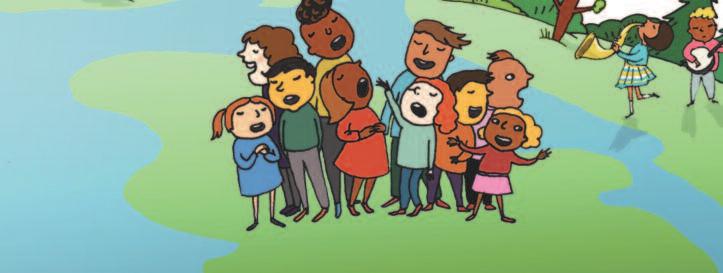
by Barb Shinaver CMEA CAJ Representative
With so many things taking our time and attention away from our teac hing, whether it be site meetings, parental communication, logistical planning, fundraising, and a multitude of other concer ns, it c an be daunting to ensure the preparedness of our entire program before festival season hits Depending on the breakdown of your responsibilities and your program ’ s offerings, your jazz progr am c an easil y become something that ends up on your bac k burner Many a school ’ s involvement and expectations for marc hing band forces a wait to star t our jazz ensembles until af ter
the season dies down, but jazz can happen at any time of year S o, why not get ahead of the cur ve? The California Alliance for Jazz is here to help you get star ted!
This fall, CAJ offered three “Jazz TuneUp” pre-festivals to inspire directors and students to gear up their jazz bands long before their first official f estival. This c linic-only event features two notable c linicians that off er tag-teamed f eedbac k and suggestions for your band ’ s future trajector y within a 45-minute time slot
Festivals were held at Hanford West High Sc hool (Hanford), Bul lard High School (Fresno), and California Institute of Tec hnolog y (Pasadena) at the end of
October and beginning of November. Clinicians inc luded prof essional musicians and educators such as Brian Hamada, L es Nunes, Paul L ucc kesi, Bar b Catlin, and Wayne Bergeron Attending groups perfor m up to t wo tunes (or 15 minutes of bits and pieces), and receiv e a half-hour c linic in a performance venue. Fellow attending jazz ensembles were encouraged to sit in the audience and watc h their peers ’ c linics and mini-performances, giving the group on stage suppor t and themselves an invaluable oppor tunit y to listen and learn
Many schools both new and familiar to the jazz scene hav e already benefitted
greatly from this experience CAJ ’ s intent is to provide a welcoming atmosphere to groups regard less of the school or director ’ s pr ior exper ience and current achie vement level, encouraging and leading ever yone to what it takes to build a thr iving jazz program Check out the following testimonials from educators who par ticipated in the inaugural r un of the CAJ Tune-Up Festivals:
“ The CAJ Tune-Up Pre-Festival was a great experience for my midd le school students bec ause it off ered a relaxed and fr iend l y environment for them to go through the f estival process, and receiv e ear ly feedback from outstanding jazz educ ators in our area The students were excited to take the infor mation we received and star t applying it to our char ts back in rehearsal the next day It was also beneficial to me as a young educator to gain some tips on teaching improvisational techniques and
encour aging students to play-out as soloists ” - Marco Mellone, band director, Computec h Midd le Sc hool (Fresno Unified)
“It was such a joy to have students come up to you as they were leaving the stage and on breaks, asking questions and eager to learn new things, all while focusing during the time we worked with them W hat a great day had by e ver yone!” - L es Nunes, jazz director, Clovis High Sc hool (Clovis Unified) and c linician at both Hanford West and Bullard CAJ Tune-Up Festivals
“ This is the best festival that I have ever attended. It gave a lot of help and suggestions to ever y group no matter their level I highly recommend this festival to a director who would like to improve their bands ”Lisa Butts, band director, Hanford West High School (Hanford Joint Union).
“ That was such a peak experience for the
Poly jazz program There is no better ser vice I c an provide for my students than to put them in live touch with the ver y best role models of musicians and people ”Chr is S te v ens; director of bands, L ong Beac h Pol y tec hnic High Sc hool (L ong Beach Unified)
CAJ would love to help you improve your jazz program through participation in these Tune-Up Festivals. We will have more of these festivals available throughout California to help reach as many schools as possible If you are interested in attending or hosting a Tune-Up festival next fall, please contact Bar b S hinav er at bar bar a.shinaver@fresnounified org
Interested in fur ther suppor ting jazz educ ation? Chec k out our website and become a member today! www cajazz org
by Rita Zigas-Brown CMEA Bay Section President
Hello, and greetings from CMEA Bay S ection. My name is Rita Zigas-Brown and I am in my first year as president of CMEA Bay S ection. It is with great pride that I ser ve my section, and I get to do so with extraordinar y colleagues as my Board members
This is my thir tieth year in public school music education, and all of my teaching years have been in the midd le school level I am in my twelf th year as the full time music director at Walnut Creek Intermediate School in Walnut Creek where I teach four levels of concer t band, one jazz band and one string orchestra Prior to teaching in Walnut Creek I was in the Novato Unified School District for eighteen years
I vivid ly remember attending what used to be called the All-S tate Music Educators Conference (pre CASMEC) in the ear ly 1990s and meeting then CMEA Bay S ection President John Maltester. John was looking to broaden and diversify the look of the Bay S ection Board by inc luding more women, as well as people of color and diverse ethnicities He invited myself and two of my district female colleagues to join the board, this is how my journey into CMEA began
John was a pioneer during his presidenc y and his for ward thinking is a mirror to our state’s present goal of IDEA – Inc lusion, Diversit y, Equit y, Accessibilit y John’s quest to change the face of those in leadership on the board while promoting equit y, tolerance, diversit y, inc lusion and accessibilit y was inspirational I star ted on the board as an appointed area assistant rep for two terms, and moved up to area rep for two terms. I remember how star str uck I was at being up c lose and personal with so many of the CMEA leaders I’d always respected. I was inspired, I thrived in this
environment of innovative thinkers and positive role models. I especially enjoyed having a network of diverse veteran teacher ’ s experiences from which to learn. I went on to hold the elected position of jazz rep for two terms and then was appointed the position of large group festivals coordinator for three terms It is only as I write this that I realiz e the depth of influence that John had on my career path in regards to my involvement with advocac y and mentoring I will be forever grateful for having met John Maltester when I did
I can only hope that if you are a teacher just star ting out that you will be able to recall that “ someone ” that had a profound influence on you If you are a veteran teacher, I hope that you can look back at the moment that you were inspired to lead It is in this spirit that I feel as for tunate as I do to ser ve as president. I feel a great responsibilit y to give back, and am humbled at the oppor tunit y.
The CMEA Bay S ection held its annual winter conference on Januar y 13–14, 2017 at Chabot College in Hayward, hosted by T im Harris. We presented more than for t y sessions in the areas of choir, band, orchestra, higher ed, technolog y, jazz, and multicultural music to approximately 350 music educators Collegiates that attend this conference do not pay a fee The conference high school jazz ensemble and junior high school conference orchestra, band and choir involved more than 300 students O ur guest directors were Mike Dana, jazz; Molly Peters, choir ; L oretta McNult y, orchestra; and S teven Hendee, band
I had an oppor tunit y to attend the NAf ME Western Division L eadership S eminar this past June with Bay S ection President-Elect Br uce L engacher. Attendees were asked to create a project that was in line with the newly hatched IDEA concept. Br uce and I brainstormed a way in which
we could involve members of our section teaching in districts that have not previously par ticipated in CMEA activities or attended our conference for whatever reason, as well as involve Bay S ection teachers that are not currently NAf ME members.
The Bay S ection initiated a new O utreach Project this year in an effor t to make what it does more accessible to music educators and students in financially challenged school districts that qualify under T itle I These communities generally have a 40 percent or higher population that qualify for free and reduced lunch Teachers in these schools that have not previously attended our CMEA Bay S ection W inter Conference were invited to attend our two-day conference as our guest for this year (waiving the conference fee), in the hopes that they return to our 2018 conference as NAf ME members, paying only the first time attendee fee of $35.
It is our belief that once these teachers are informed as to the program/curriculum suppor t (via attending this conference) that is within their professional right, and the federal funding that is available to them for professional develop-



ment, etc , these same teachers will seek membership for the sheer advocac y that is available.
Additionally, we invited student musicians of these teachers to be sponsored in one of our junior high school conference groups. I would like to thank the several businesses that generously donated to our O utreach Project making it possible for Bay S ection to sponsor up to thir t y students in the junior high school conference ensembles Thank you to J W Pepper in D ublin, C & L Music in Concord, Lamorinda Music in Lafayette, Music V illage in S an Jose and Keith Holland Guitars in L os Gatos Their generous suppor t is much appreciated and makes many dreams possible
I am ver y much looking for ward to CASMEC in S an Jose on Febr uar y 16–19, 2017. I can’t imagine not attending this collaboration of various memberships. I learn new things, I meet new people, I reconnect with colleagues I only see at conference, I eat good food and get in my steps walking to all of the sessions, concer ts and exhibits I hope to meet you there, please say hi when you see me walking around


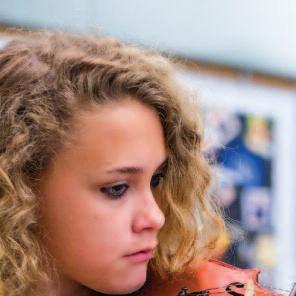



One last thing before signing off I know how hard ever yone works to give their ver y best to their students. I know how committed you all are. I know how tired you all are. F ind your balance. I just can’t stress that enough. I am so tired and so incredibly drained by the end of the work week because of the energ y I share with my students, I really, really need my sleep and decompression time on the weekends The majorit y of my fatigue is a result of mental drain due to repeating myself over and over and over for student understanding, only to feel unheard at times (do you ever feel like this?) I make it a priorit y to nourish myself too I exercise Monday through Friday to get out the toxins, and I play my c larinet in performance ensembles two nights a week to feed my soul. I make a conscious decision ever y day to appreciate being healthy and I reach out to my core of c lose friends and family so that I do not feel isolated or alienated during the intense schedule I maintain ten months of the year. I encourage you to find ways to nourish yourself, appreciate the positives and get your rest when you can



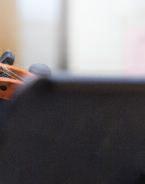
Submit your survey to be considered for the 2017 Best Communities for Music Education program by January 31 at nammfoundation.org/survey
Stay Current:
Download podcasts on music education and sign-up for our newsletter loaded with ideas for music educators.

Attend The NAMM Show!
Music educators are eligible to attend The NAMM Show to review products, develop skills and connect with a community of likeminded professionals. Use promo code NS17CMEA Join the Mission: The NAMM Foundation promotes grants, research and advocacy to support music education across the lifespan–get involved today!

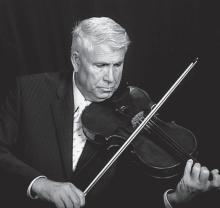
The Most Powerful Tool in Your Treasure Trove of Teaching Tactics by Dr.ThomasTatton
escribing with some specificity the uses of repetition and feedback strategies for beginning school string programs is not too difficult. 1 Even though beginners may start in the third, fourth, fifth grade or later; meet one, two, three or more days a week; enjoy a more or less qualified and dedicated instructor; or live in a predominantly affluent or less affluent school district, all the principles of repetition apply. Not quite so with more experienced players, middle school or high school orchestra students, youthful musicians who have played for some time. General principles taught by using conscious and deliberate repetitionfeedback techniques are the most advantageous approaches. Three principles can be identified:”
Posture : It may seem that once good posture habits are set, they are set. Not so! Even professionals need a tune-up every once in a while often involving adjusting posture. Do rotate chairs frequently and occasionally leave the podium during the rehearsal. For a well-trained and experienced ensemble gentle reminders and proximity to students are most often all that is needed.
Bowing : Visual awareness –not just the conductor but the students as well. A good challenge for those in the back of a section: Ask them to report on the bowing consistency in their section. Be specific in your directions: Ask them to check for bow direction, geography, etc. This brings everyone into the quest for a more powerful sound and a beautiful tone.
Rhythm : We know the many problems that will challenge our students: dotted rhythms, triplets, syncopation, hemiola, etc. Pre-select difficult rhythms (chunking –explained below) and work on them outside of the musical context. Work with identified rhythmic difficulties in your warm-up. 2 Then insert and rehearse in context. Rhythmic awareness is an important tool.
Ensemble : Identify trouble spots and work by separating parts and, use a metronome. Charge your students to listen. Ask them to help identify the sections that are not together. Rhythm and ensemble difficulties are different aspects of the same problem, solve one and we have moved toward solving the other.
Intonation and Tone : These two fundamentals are linked, as are other fundamentals, but even more so. Tone and intonation were discussed in a recent article titled “Improving Tone and Intonation” in the Summer 2016 Issue of CMEA Magazine.
An additional word about intonation: Playing in tune is a lifelong journey for an ensemble as with an individual. In your ensemble consider that, if continually highlighted, intonation will improve gradually over time as does technique and musicianship. Your ensemble should play better in tune with improved technique and musicianship at the spring concert than at the fall concert.
Rudiments : Posture is always key. Appropriate, supple and
• relaxed posture allows good intonation to manifest itself; poor posture prevents good intonation
• tion
Good quality, clean strings allow good intona-
Tuning process, have one. 3 Treat tuning as a sa-
• cred obligation. Make that a point with your students.
Musicality: Line, Phrase and Direction: Audiate 4 and sing to and with your students. Can your students hear their line or rhythm before it is played? Can they hear their line or rhythm some time after their line has been played? This takes practice but it is a skill well worth acquiring. Sing to and with your students - singing takes the paraphernalia out of the mix and concentrates on the purely musical aspects of line and phrase.
Record your rehearsals, often : Listen for and critique the phrase structure and musical direction as a group exercise. Ask questions of your students like: “Is from Section A to Section
B a complete musical idea? Is this a question/answer phrase? Is the end of this musical idea strong or weak?” The age and experience level of the ensemble will determ ine the depth of terminology and u nderstanding. The questions as well as the answers are endless. Your students will improve their list ening skills and willingness to engage simply by repeating this inclusionary process.
E xperiment : Play a particular line three different ways –different dynamic, different shape, different speed. Take a vote – go with the majority, at least for the time being. Allow the students to be a part of the decision-making process all along this journey towards performance. How else will we help them improve their technical as well as their musical skills? Students who are included in musical decisions will feel rewarded at each and every rehearsal. Have students memorize short sections of their literature . Memorization promotes audiation, listening and hearing as well as watching and interacting with their musical colleagues. One should not be surprised what students “do not hear” when only concentrating on their individual line and the conductor.
Meaning/Message/Musical Objective : Our music should tell a story, paint a picture, inspire or stir the emotions. It can make the listener want to cry, pray, smile, tap the foot or dance a little. Music might make one feel patriotic or just plain proud. It can also inspire us to do great things or to just keep going. Simply put –great music should reach the soul. It is our job as music educators to help our students (and our audiences) discover that power in music. Take the time to share that understanding with your students. This simple act, repeated over time, will improve their performance, increase their musical understanding, broaden their view of beauty, enrich their humanness and illuminate their worldview.
Chunking means working on smaller units of information, i.e.
short sections. It is a relatively recent term in current use by education academics. Music educators have used this “technique” forever. By isolating short but difficult sect ions of music, e.g., a fast passage, a shift or awkward fingering, an ensemble difficulty, etc., we can, using a repetition – feedback techn ique, quickly mitigate, improve and hopefully solve the difficulty. It is important to remember that w hen using this strategy that we: Sharply limit the extent or amount
• of music. (Don’t try to do to much.)
• problem?)
Define the difficulty. (What’s the
fines deliberate, thoughtful practice. Use a metronome –sparingly. Increase the tempo as the particular section improves –or simply as a strategy to increase speed. And, u se over time – days or weeks. For e xample, perhaps there is a passage that is marked to be performed at =132. Day one, work t he passage at 80, the next day at 84, the next at 88, etc. until the ensemble has either reached its m aximum speed ability (the less experienced musicians are unable to move faster, at this time) or the desired tempo.
Explain the remediation. (Plan for
• more than one approach, be flexible.)
• yet prefect.)
Recognize progress. (Even if not
Announce a follow-up plan.
• Identify parallel passages. (Work
• on these passages also.)
Perhaps the weakest or the least prepared portion of any substantial piece of music is the very end. An excellent strategy to use, on occasion, is to start at the last rehearsal mark and work to the end. Rehearsing the end of a musical selection is at least as important as rehearsing the opening of the piece.
Slow practice is the secret everybody knows! It is inclusionary, effective and highly efficient. Of course this technique should be limited to the difficult, tricky, awkward and/or complicated sections –just as with chunking.
Slow practice : Includes everybody, even those in
• the back of sections.
• movement and memory.
Works on “collective” small muscle
• improvement –bow placement, posture adjustments, etc.
Allows for fundamental technical
• between musical lines.
Highlights interaction amongst and
• ties.
Identifies and underscores difficul-
• Builds individual and collective
Promotes/allows active listening.
• confidence.
How slow is slow? Seek a tempo at which the entire ensemble can be successful –that actually de-
By prioritizing difficulties, chunking and slowing down the practice of prioritized sections you will reinforce repetition as the most powerful tool in your treasure trove of teaching tactics. While it is sometimes helpful to have outside evaluators it is what we do in the rehearsal and how we evaluate our own daily performance that counts. At the end of the day ask: “Did I reach all of my musicians today? How can I improve that particular difficulty tomorrow? What tools do I have to accomplish that? Did I make the most efficient use of our collective rehearsal time today?” For a thoughtful teacher especially with four, five or six daily rehearsal sets this is quite a task. But, what a joy and what a reward.
•
1. Thomas Tatton, “Beginning String Class: Repetition,” CMEA Magazine, Fall 2016, Vol. 70, No. 1, P.13.
2. Anne C. Witt, A Rhythm a Week, Belwin-Mills, 1998. And Charles Forque, James Thornton, Gerald Anderson, editor, Harmonized Rhythms, Neil A. Kjos Music Co., 1996.
3. Michael Alexander wrote a marvelous article on every aspect of the tuning process: “Teaching Tuning to the String Orchestra,” American String Teacher, November 2008, Vol. 58, No. 4, Pp.20–26.
4. Audiation is the ability to hear and understand music that is no longer or never was present in sound. Edwin Gordon developed this innovative musiclearning skill in the mid-1970s. Google audiation or GIML (Gordon Institute for Music Learning).

by Dr.Alexander Koops
CMEA Southwestern Section President
Young Composers Festival
April 29, 2017 6:00 p.m.
Munson Recital Hall
Azusa Pacific University
The Azusa Pacific University Musical Studies Department will host the second annual young composers festival. This solo and small ensemble composition festival is open to any student age eighteen and under and will be adjudicated by APU faculty composers Phil Shackleton and Thomas Hynes. Any K–12 music teacher may submit nominations of their top student composers to Alexander Koops (akoops@apu.edu) by March 15, 2016 to be considered for inclusion in the festival. Participating composers are expected to perform their own compositions or arrange with their teachers to find performers for the compositions. Each participant receives feedback on their composition and a recording of the performance.
NAfME Composition Contest
http://www.nafme.org/programs/contests-callscompetitions/2017-nafme-student-composers-competition/ NAfME is seeking original music written by student composers for featured performance in the Young Composers Concert. Teachers and students are invited to submit original compositions by students for possible inclusion in the concert. Students in elementary school, secondary school, college, and graduate school are eligible to submit compositions. Compositions may also be submitted for specific chamber instrumentation and may be eligible for performance at the Young Composers Concert and a cash award. Compositions submitted that fall outside of the choral or chamber instrumentation guidelines will be adjudicated but will not be eligible for awards or for performance.
Up to ten winning composers will receive cash awards, thanks to the generous support of the European American Musical Alliance (Dr. Philip Lasser, president) and the Double R Foundation. All entrants will receive written evaluations of their compositions. The deadline for submissions is March 1, 2017.
Azusa Pacific University/J.W.Pepper Composition Contest www.apumusiccontest.com
A music composition contest for high school sophomores, juniors and seniors, in five categories of music, with a cash prize of $1,000 per category, public performance and recording by an APU ensemble, a one-year membership in J.W. Pepper’s My Score® program, and consideration for publication by J.W. Pepper/Wingert-Jones Publications.












by Emily Moss CMEA Higher Education Representative
As most collegiate ensemble directors well know, the bringing together of our students in musical performance goes beyond the instr uction of performance skills. We have all witnessed the comrader y our students feel af ter a well-executed concer t, or the pride they share when a par ticular ly challenging piece has been conquered In higher education, we also get to witness the natural cohor t that is created through the music major, which of ten results in deep friendships that can last a lifetime And yet, something special happens to the students who make music together regular ly through the large ensemble experience
The presidential election results from November brought this phenomenon to the fore in ways that were both deeply hear tening and predictable. W hen faced with a traumatic experience, we all look to our communities for suppor t, reassurance, and connection Many of our colleagues shared on social
media the comfor t and beaut y their rehearsals brought to students in the days immediately following the election We have seen it before and will see it again – sharing the beaut y of musical performance can heal and lif t the soul.
In some circ les within music depar tments across the countr y, the role of the large ensemble is being called into question The recent College Music S ociet y Manifesto [www mtosmt org/issues/mto 16 22 1/manifesto pdf ], released in November 2014, presents a new view of the future of undergraduate music instr uction, one that prioritiz es the “ improviser-composer-performer ” over the “ inter preter performer ” This document has raised concern within a variet y of wind band director professional organizations, inc luding an entire session discussing its possible implications at the March 2015 CBDNA National Conference in Nashville, Tennessee. It has also prompted some welcomed conversations about what the role of the large ensemble is and
how or if it should change
Another discussion around the pur pose of performing ensembles within the curriculum at colleges and universities stresses ver y real concern for the future job placements of performance majors. An October 2016 ar tic le in The Chronic le of Higher Education [www.chronic le.com/ar tic le/TheNew-Performing-Ar ts/ 238020] discusses the “simple supply and demand problem” our graduates face when they attempt to enter the work force with their music performance degrees: “Ar ts educators should no longer ask students to continue an end less c yc le of rehearsals leading to extraordinarily high-qualit y performances for dwind ling audiences and a rather striking separation from career preparation.” These two examples highlight the need to look deeply into the skills and learning oppor tunities that large ensemble par ticipation affords our music majors, par ticular ly those that go beyond the more widely-known performance-based
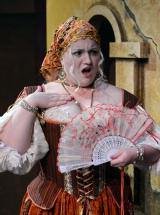



skills of musicianship This is where that “special something ” that happens between and among our students during large ensemble par ticipation must be more concretely ar ticulated.
Dr. Elizabeth Peterson, associate director of bands and c linical professor of music at the Universit y of I llinois, has been involved in many of the discussions in the band wor ld around craf ting a response to the CMS Manifesto, par ticular ly a defense of the large ensemble’s role in higher education. D uring her previous appointment at Ithaca College, she asked members of the symphonic band (fall semester, 2014) the following question: “ W hat is the pur pose of the large ensemble experience?” Many responses involved the t ypical musicianship-related objectives, such as better listening skills, the abilit y to watch/respond to a conductor, and performance skills related to the exposure to a wide-variet y of reper toire However, a large number of responses inc luded skills not directly related to music Here are just a few examples of what the students said:








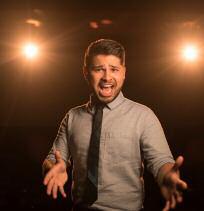



“ To better our skills in working with others P laying music is all about working with others, collaboration. We need ever y oppor tunit y we can get in order to cultivate such skills.”
“Ensembles teach me to co-exist and really listen.”
“L earning to be par t of a group reaching towards the same goals stresses the impor tance of individual practice contributing to a bigger picture.”
“ To learn how to work together in a group. It should provide a sense of communit y All the members should hold each other accountable for all the music learned and created ”
“ Working with others to create something beautiful, to not act as individual par ts, but as a whole ”
These comments illustrate students’ awareness that large-ensemble par ticipation, in addition to specific musical training, involves the learning of life skills that have more broad applications There are skills associated with success in group settings, such as cooperation and collaboration; inter personal skills such as mutual respect and working with differing opinions; and the leadership skills of goal setting and compromise. In addition to skills that can be transferred to careers both in and out of music, creating music together has the potential to teach care, love and respect for others.
These skills are not all naturally absorbed by our students. It takes something on the par t of the director to create the conditions that will allow them to flourish. “How does the career third c larinet player learn leadership? Is mutual respect discussed as a goal of the ensemble? Do the members get the oppor tunit y to collaborate with guest ar tists or composers?” We have the capabilit y to bring about these skills if we feel they are wor thy of our time and energ y – the main pur pose of our ensembles remains centered on the musical skills required of our members
Many of us have not yet encountered anyone questioning the validit y of the large ensemble or its prominent place in our curricula W hether or not that day arrives, we should consider articulating what we feel is the impor tance of what we do in both the rehearsal and performance hall. Perhaps your ensemble syllabi have these skills, both musical and other wise, c lear ly stated. As all of us face a culture where the value of a college degree is being examined, more evidence that what we do matters to our students’ futures could make all the difference.
And giving them three to four more hours a week off their cell phones is a bonus
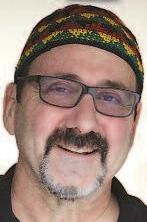
by Richard Lawton CMEA General Music Representative
ne of the nice things about changing schools, as I did this summer af ter seven years at one site, is that it presents an opportunit y to take another stab at material and ideas that never quite worked at the other place. W hen the winter holiday show season rolled around, I decided to take another crack at Zemir Atik as a vocal piece I love this song, reputed to be one of the oldest known folk melodies, as a challenging but manageable recorder tune. However, the inter vals of the P hr ygian dominant (Eg yptian) scale –the minor second followed by an augmented third –had always seemed just beyond the singing abilit y of my fourth and fif th graders Accordingly, I refined my lesson plan and allowed some extra time. That turned out to be unnecessar y The students at my new school, many of them of Midd le Eastern descent, sang the scale perfectly from day one
I was reminded of something a professor of mine once told me about ver y young children of Mexican heritage having a knack for being able to sing in parallel thirds Having never taught in a school with a large Latino population, I’ve not had an opportunit y to obser ve this first hand, but I don’t doubt that it is so There is a c lear cultural connection at work. All children (and for that matter adults) are musical, but that “musicalness” of ten manifests itself in abilities connected to cultural identit y Moreover, these manifestations are an expression of that identit y A smart music teacher learns to recogniz e this and take advantage of their students’ existing musical gif ts, but what obligation do we have to nurture and develop those abilities, particular ly when they are related to heritage?
Two frequently made arguments for teaching in a culturally relevant way are that doing so contextualiz es abstract ideas by making them relatable to the student ’ s home culture – what Geneva Gay and others have called “ bridges of meaningfulness” – and that the approach results in cultural pride that empowers and motivates students.1 This reasoning is of ten extended to inc lude the idea that, as we prepare students to be citiz ens as well as scholars, we teachers have a responsibilit y to instill a sense of social justice 2 The extent to which a culturally relevant approach makes instruction more meaningful to children is a matter of conjecture, but there is no doubt that building on existing knowl-
edge – encouraging kids to make their own connections – is the most effective way to teach any subject
However, attempting to mandate culturally relevant instruction in our curricula or as district polic y has its limitations. Culture festivals or designated heritage months still need to be contextualiz ed at individual schools to effectively engage students, and that process can be difficult for an itinerant music teacher who comes to a school one day a week Authenticit y is a particular challenge. Many of the same proponents advancing an argument in favor of culturally relevant music instruction also argue that inauthentic elements – simplified musical practices, translated words – dilute the value of instruction, but these are precisely the sort of shortcuts that teachers with limited exposure to their students are forced to take. This is not to say that we should abandon efforts to inc lude culture in our instructional focus, quite the opposite, but simply an acknowledgment that relying on big picture solutions will not get the job done.
Fortunately, there is a way to engage students in culturally relevant ways on a regular basis, respect their communit y norms, and teach authentically, and that is to base instruction on the individual school ’ s microculture.
A microculture is a culture within a culture. The term is increasingly used by educators to identify communities within a school or even a c lassroom that student feel a connection to I am using it here to describe the culture of an individual school itself as a unique institution with a blending of populations, practices, and beliefs that not exactly like any other school, even one that may be right down the street
It is shortsighted to think about culture strictly in terms of regional practices, ethnic heritage, socio-economic conditions, or language proficienc y. Terese Volk, in her influential book, Music, Education and Multiculturalism, even while arguing in favor of a multicultural approach, wrote that the determination about whether culture of the broader communit y or the culture of the individual school is of greater instructional value is not c lear cut and should probably be lef t to the individual teacher ’ s discretion 3 Attempts to connect instruction to a student ’ s home culture can be a useful way of engaging their interest, but in the social media age many other influences play a role in determining

what kids already know and what they would like to know more about. Who would argue that popular culture, particularly pop music, is not at least as important to kids as songs their parents sang to them? To be sure, we have an obligation to teach in a multicultural way, in part because understanding and honoring diversity is fundamental to our way of life. At the same time, to be successful as teachers we must be sure the kids are engaged. If they are not, the rest doesn’t matter.
As John Dewey observed, our understanding of who we are as a society needs to be reborn with each new generation, and schools act as the “mid-wife” in that process.4 Culture is an ever-evolving thing, but at any given moment it can be thought of as the sum of the heritage, practices, and interests of all the stakeholders. In an elementary school the students are stakeholders, maybe the most important ones, but so is the teacher. I once had a classroom colleague who developed a math unit around the NCAA Men’s Division I Basketball Tournament. I doubt whether any of his fifth graders were as excited about college basketball as he was, but his enthusiasm was contagious, and over time Mr. Alpert’s Basketball Pool became a traditional practice at the school that was much looked forward to.
This example underscores one of the advantages to broadening our sense of what culture consists of. If teaching in a culturally relevant way includes paying attention to the school’s microculture, then new traditional practices can be developed, even while older ones are honored, and the definition of authentic instruction does not have to be restricted to traditional practices, but can be broadened to include experiential authenticity –the genuineness of play, of taking creative risks, and the joy of jumping into a musical groove and finding friends there. Developing an understanding of a school’s microculture and incorporating it into instruction is, of course, every bit as time consuming as efforts to increase societal cultural
awareness. It is another compelling reason why ideally music teachers should be part of the community and not part-time sidemen, but as we have already observed, circumstances for music teachers in California public elementary schools are rarely ideal. These are a few of the things I have found useful to keep in mind when trying to engage students on a microcultural level:
Focus on the elemental. We should recognize that fundamental music ideas – beat and rhythm, notation, melody – can be taught using just about any musical style or genre. Kids are more likely to pay attention when these ideas are needed to play music the kids are interested in. So play that funky music.
Focus on process. At some point all music instruction includes a presentational aspect, but, particularly in elementary school, formal performances create all sorts of culturally inauthentic moments. It is within the creative process where most of the authenticity in music class is experienced. Performances will be more meaningful to students if you let them have a hand in the development of the presentation, even, in my experience, if that comes at the expense of traditional performance norms.
Collaborate with students. If we are focused on microculture, then what students are interested in is important, maybe in some ways, more important than what interests the adults in their community. There are often classroom management challenges when students are allowed to think of their teacher as a peer, but a well-structured classroom with clear boundaries will keep these in check. And the upside in music class to having your students see themselves as being part of the band with you cannot be overstated.
Be nimble. Recognize that the microculture is always changing and be prepared to adapt. Most importantly, ask at the end of every lesson, “Did this work, how well did it work, and why?”
Finally, keep politics out of the mix. Cultural sensitivity is essential,
but I have to say, it has always been when I was attempting to exercise sensitivity for its own sake that I have gotten myself into trouble. I recall earnestly trying to infuse my instruction with culture at my first school, which had a large Korean population. I asked the Korean heritage teachers repeatedly for “authentic” material that kids would typically sing for holiday programs in Korean schools and was horrified when they presented me with CD’s of drum machine and synth-driven bubble gum rock (I hadn’t yet learned about K-pop). The fact that I was sure that this music lacked culture authenticity was a reflection of my ignorance of the very culture I was seeking to embrace and my own musical bias. More to the point, however, I had failed to find out what the students who would be performing the material might be interested in. As I was to discover when I got to know them better, many of them did not care for Kpop either, preferring classic rock and TV theme music.
Since then I’ve learned to make fewer assumptions, to talk to my students more about what they like and don't like, and to teach accordingly. They get a lot more out of my classes, and so do I.
•
1. Abril, C. (2013). “Towards a More Culturally Responsive General Music Classroom.” General Music Today 27(1) 6–11. National Association for Music Education. Downloaded from gmt.sagepub.com at NAfME 11/12/2016.
2. Fitzpatrick, K. (2012). “Cultural Diversity and the Formation of Identity; Our Role As Music Teachers.” Music Educators Journal. Vol. 98, No. 4. 5359.
3. Volk, T. (1998). Music, Education, and Multiculturalism; Foundations and Principles. New York, NY: Oxford University Press.
4. Dewey, J. (1980, 1899). School and Society. Carbondale, Il: Southern Illinois University Press.
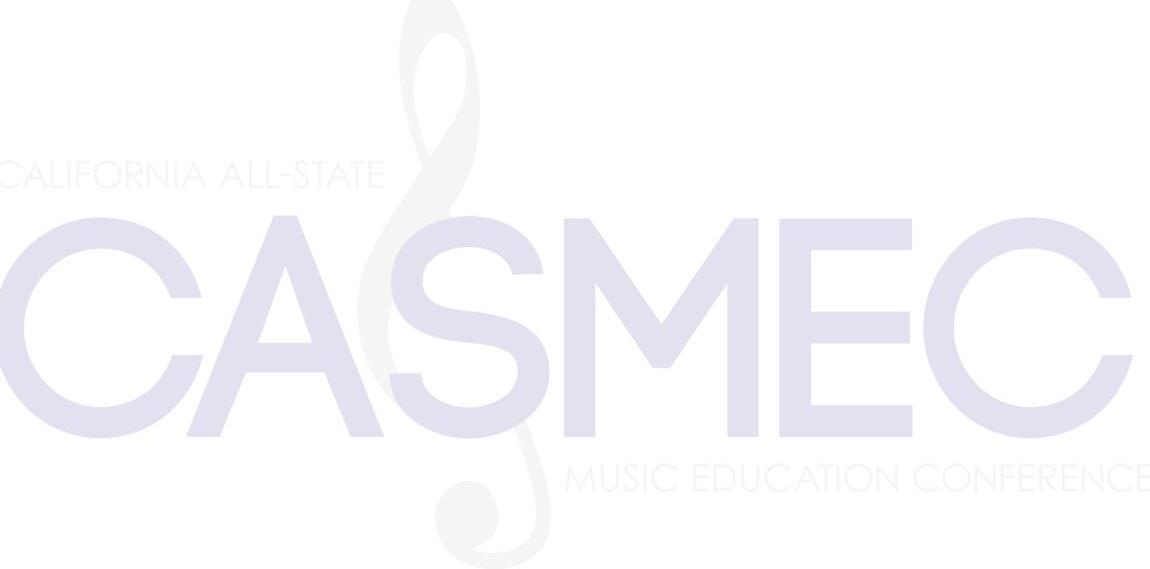



by John Burn CMEAPresident-Elect
idway through my first year on the CMEA board as president-elect, I am in awe of those with whom I serve and those that have served before me, particularly pastpresidents Norman Dea, Russ Sperling, Michael D. Stone and current CMEA President Scott Hedgecock. In just a few short years, CMEA has gone from a difficult period of declining membership, declining conference attendance, and declining relevance, to our current reality. Membership is steadily increasing, we are part of an unprecedented and growing collaborative conference, and our state and national advocacy efforts have made real progress.
At the state level, the bill we sponsored, AB2862, a bill to update the Visual and Performing Arts Standards, is now the law of the land. At the national level, the recently passed Every Student Succeeds Act explicitly names music as part of the well-rounded education to which every student is entitled. Both of these achievements happened only because of CMEA’s action in Sacramento and NAfME’s action in Washington D.C. In our ever-changing political climate, we must remain vigilant as money is allocated at the state and national level to implement these laws. How can you help? Keep your CMEA/NAfME membership current. Encourage a colleague to join CMEA/NAfME, and attend Stand Up 4 Music Day on May 18, 2017 on the steps of the State Capitol in Sacramento.
In February 2015, 1,394 registered music educators, 1,230 honor musicians, 296 exhibitors at 105 exhibits, 112 clinicians, 19 directors directing 1,116 performing students, their 123 chaperones and VIPs, and 147 volunteers/staff/board members, all totaling over 4,300 people,
all came together for four days that included: five receptions/awards ceremonies/banquets, 15 state honor ensembles, 16 concerts, and 101 staff development sessions. It was awesome.
The honest and open collaboration between CBDA, CODA, CAJ, ACDA/CA and CMEA has been, and continues to be, inspiring. Decisions are difficult. The needs of stakeholders vary. Every choice has trade-offs, and all decisions must be fiscally sound. It is in this spirit of collaborative decision making that CASMEC 2016 was built, and CASMEC 2017 promises to be even bigger and better. CMEA has made an explicit effort to support sessions that will help us be inclusive and develop practices and programs that reach all of California’s diverse, amazing and deserving students. Don’t miss this conference.
Here are three ways to take advantage of the value of your CMEA membership. Encourage your students to participate in one of our two CMEA State Solo and Ensemble Festivals. Apply to have your band, choir, or orchestra perform at the CMEA State Festival. Take advantage of our mentorship program.
We currently have more than forty trained and experienced mentors across the state that are ready to give new teachers, or just teachers teaching new subjects, the support and advice that will insure their success. If you or someone you know could benefit from a mentor, submit the mentee application on the CMEA website today.
For information about all of these amazing programs: Stand Up 4 Music Day, CASMEC, CMEA State Festivals, and mentorship, visit the CMEA website. Like us on Facebook, follow us on Twitter, and come introduce yourself to me at CASMEC. It’s going to be inspiring.

INTIMATE CLASSES. INNOVATIVE PROGRAMS. OUTSTANDING ENSEMBLES.

Located minutes from downtown, the University of Portland combines personal attention with challenging academics in our nationally accredited music program.
Now offering a pre-music education track to prepare you for a Master of Arts in Teaching.
University Singers • Wind Symphony • Orchestra • Women’s Chorale • Jazz Ensemble • Vocal and Instrumental Chamber Music
2017 SCHOLARSHIP AUDITION DATES
Saturday, February 18 and 25 • Monday, February 20
FOR MORE INFORMATION up.edu/music
UPMusic@up.edu
503.943.7228
7.5 x 5 Music ad 2016-17 / Wind instrument photo - with dates

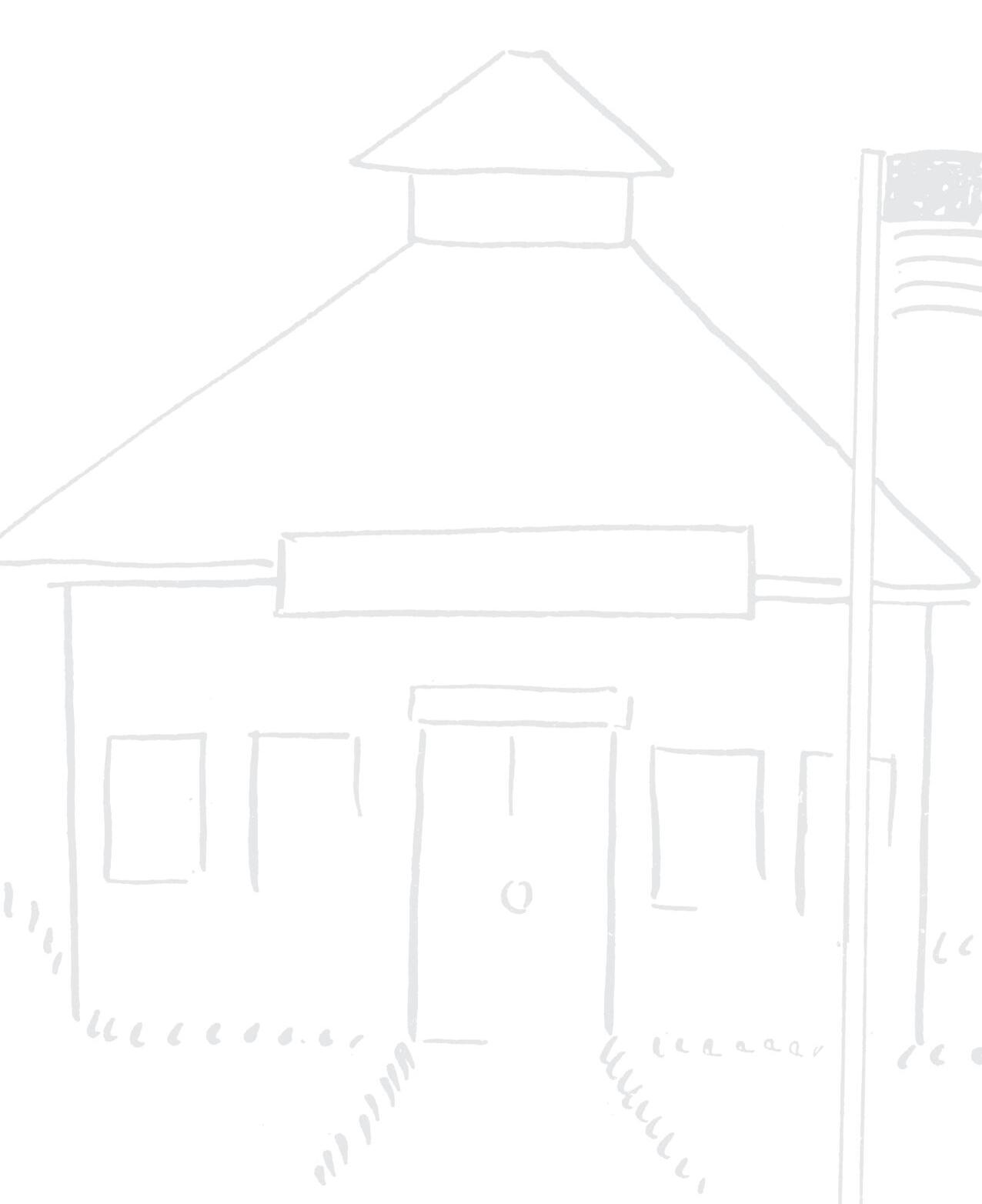
by Angela Holmes CMEA Special Learners Representative
he 2017 CASMEC Conference will be represented by four sessions that will address the issues that music educators have asked to hear about. The sessions presented with special learners as a primary focus are presented to expand, further understand, and reinforce the concept that “all children can learn.”
We are pleased to present two sessions with Julia Hahn. Julia’s knowledge regarding instructional practices apply to choral and instrumental music teachers. She is a classroom teacher who incorporates her training as a music education, which includes music therapy training, with special learners in a general education or special education setting. Julia’s core belief is that all students have the need to express the “music within.” She will share her techniques and insights in “The Music Within: Best Practices for Teaching Children with Special Needs.”
A second offering includes our very important partners in the educational “triangle,” parents. Angela Holmes will moderate a panel of five parents who are parents of musicians who are special learners. The parents will answer questions aimed at trying to help educators understand the unique educational needs of students with special needs. More importantly, the parents will address, among other questions, “What do music teachers need to know about special learners?” and “What kind of relationship do teachers and parents need to have in order for children to have a positive music experience?” These parents, representing student with various disabilities, can be heard at the session, “Parent as Partners: What Music Educators Need to Know”.
A third session will offer an approach that explores the possibility of addressing planning and instruction by going beyond category characteristics. “Common Learning Characteristics: Planning Instruction that is Inclusive for All Learners,” presents the strategy of approaching teaching music to special learners by assessing their needs through six areas of learning. The goal is to gain greater achievement through the development of accurate methods of accommodation, adaption and modification in the classroom for every special learner.
We hope you will join us in celebrating CASMEC, which continues to demonstrate its support of special learners by increasing the inclusion of sessions that address the unique needs of special learners and the music educators dedicated to instruction for all.
Choices for music teachers:
“And Don’t Call Them ‘ Women’ Composers!” - Jeffrey Boeckman
“Beyond the Festival Performance: Creative Programming Ideas for the Rest of the Year ” - Patricia Cornett and Travis Cross
“Classroom Management S olutions: W ho Is Controlling Your Rehearsal, You or Your S tudents?” - Marc Dickey
“Director ’ s Reading Band ” - Jermie Arnold
“Instrument S election Night ” - Kristin Kunz elman
“Marketing Your Music Program: W hat can we apply from the Business Wor ld ” - Chris Marra
“Motivating the Individual S tudent in the Ensemble Classroom” - Jessica Vaughan-Marra, Jonathan Grantham and S helley D urbin
“Percussion Bilingualism: How to S peak to Percussionists from the Podium” - Thomas S labaugh II
“P laying by Ear: Improvising and Composing with Beginning Band S tudents” - John L W hitener
“Practical Score S tudy for the Busy Band Director ” - Lawrence S toffel
“Q ualit y Music for Combined Band and Choir ” - Edward C Harris and Jeffrey Benson
“S imple S teps to Make Your S econdar y Clarinet S ection S ound Better ” - Fresno Unified Facult y Clarinet Q uartet:
Richard Martinez, Jennifer Ostwalt, Taylor L edak, Anne Hendrickson
“S olving the Mysteries of the French Horn” - Michael F leischmann
“ The Compelling Conductor: Maximizing Rehearsal Effectiveness Through Meaningful Gesture”
- John Zarco and Courtney S nyder
“ Wood-W ins and Brass-W ins: W inning Ideas for S tarting Your Elementar y Band Program”
- Br yan K Holbrook
“ You Are W hat You P lay : Choosing Q ualit y Repertoire for Your Ensemble” - Danielle Gaudr y “ Young Composers Performance and Composition Clinic ” - Alexander Koops and Julie Bounds

by Bill Wilkinson CMEACASMECLogisticsCoordinator
he California Music Educators Association is excited with the prospect of a promising CASMEC 2017 this coming February. For those of you that may be new to the CASMEC experience, the California All-State Music Education Conference is a collaborative effort of five state music educators associations (ACDA, CAJ, CBDA, CMEA and CODA). Within the last decade these five organizations have come together to provide the music educators of California an all-inclusive super conference. Conference attendees can now attend choral, jazz, band, orchestra, and all things music education under one roof.
The 2016 conference was a huge success, the first year in our new San José home. An increase in attendance was evident with many clinic rooms at the Fairmont Hotel filled to capacity and beyond. This year in an effort to accommodate growth we are moving the majority of our clinics from the Fairmont to the spacious 373,000 sq. ft. McEnery Convention Center. The McEnery Convention Center is only a quick walk to the south of the Fairmont and is nestled between the Hilton and Marriott Hotels on San Carlos Street, diagonal to the Center of Performing Arts. Conference attendees will benefit from this move to the convention center. Wider hallways, large rooms and a much larger exhibit space will accommodate our conference’s growth. We believe the new location will prove to be a
second floor atrium. It’s a not-to-miss event.
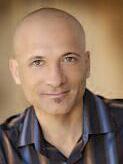
With a full line-up of outstanding presenters we are getting things started early. Our sessions will begin at 12:45 p.m. on Thursday and run all day Friday and Saturday. Friday evening, beginning at 5:30 p.m. is the CMEA Awards Gala, honoring some of California’s most outstanding music educators and music partners. This year’s event will take place at Gordon Biersch, 33 East San Fernando Street. Tickets are selling fast. Reserve your space today. Saturday will be an exciting day because CMEA will have special offerings back at the Fairmont Hotel. You will want to be at the Fairmont on Saturday, February 18 at 11:30 a.m. to catch “Data is the New Kale” presented by Patricia Wayne. This is sure to be informative and obviously good for you. On a proactive note, we are offering four repeat sessions this year to allow our attendees to experience more of the conference. Repeated sessions at the Fairmont are:
“Diverse Approaches to Developing a Nontraditional Ensemble,” presented by Danielle Collins; “The Music Within: Best Practices for Students with Special Needs,” presented by Julia Hahn; “Teaching Music in Inner City Los Angeles,” presented by Dr. John Whitener, Dr. Lawrence Stoffel and



C“A W hole New Wor ld? Gender in the Choral Classroom” - Joshua Palkki and W illiam S auer land
“Dr umming Inside the Midd le School (Grades 5–8) Choral Classroom” - Mar y Hamilton
“Engaging Their Minds and Welcoming Their Hear ts: a natural integration of Orff and Choir ” - S hane Troll
“Help! My Guys S ound Terrible! Q uick S olutions to Common Problems” - Jac lyn Johnson
“Intonation Choices: S inging In Tune with S t yle” - Donald Brinegar
“Monkey S ee, Monkey Do: W hy Conducting Gesture Matters in the Choral Rehearsal” - Jeffrey Benson
“S mar tMusic for Vocalists: No Instr umentalists Allowed ” - L eigh Kallestad
“Latin American Choral Music for Secondar y School Programs: Historical Background and Performance Practices” - Angel M Vázquez-Ramos
“ The F irst Ten Minutes: Re-Imagining the Role of Warm-Up Activities in the Choral Rehearsal” - Alyssa Cossey
“ The Power of Musical Intent: Developing Vocal Technique and Musical Instinct in S ingers” - Br uce S outhard
“Using Circ le S inging to Enliven Choral Creativit y ” - Joshua Palkki and S tuar t Chapman Hill
“Common Learning Characteristics: Planning Instruction that is Inclusive for All Learners” - Angela Holmes
“ The Music Within: Best Practices for Students with Special Needs” - Julia Hahn
“Parents as Partners: W hat do Music Educators Need to Know About Special Learners” - Angela

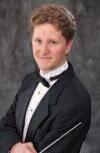




by Donna Harrison
President, California Orchestra Directors Association
CMEA CODA Representative

he California Orchestra Directors Association (CODA) has selected eleven outstanding orchestra clinics for CASMEC 2017 that offer a broad range of offerings to appeal to veteran and novice music educators. Here is a list of topics and clinicians:
• Dr. William Harrington
“Collaborative Learning Among High School Students in Chamber Music” –
• tra Rehearsal” – Dr. Alexander Kahn
“The Mindful Musician: Incorporating Mindfulness Strategies into the Orches-
• at Your School” – Jim Palmer
“Symphonic Sounds: A Musician’s Guide to Developing a Symphony Orchestra
•
•
“Starting Without the Books for String Players” –Richard Frazier
“More Than Pitch – A Look at Right Hand String Technique” – Stephen Moore
• have a Successful Program” – Bryan Holbrook
“A DNA Analysis of Elementary Violins: An In-Depth Discussion on Ways to
• Valley High School Orchestra
“J. W. Pepper Orchestra Music Reading Session” –Mark Aubel and Amador
• Rehearsal” – Jim Palmer
“Artistry, Engagement, and Reinforcement: The Three Ingredients of Artistic
• Mark Kovacs
“Ten Games to Make Your Rehearsals More Productive, Relaxing, and Fun” –
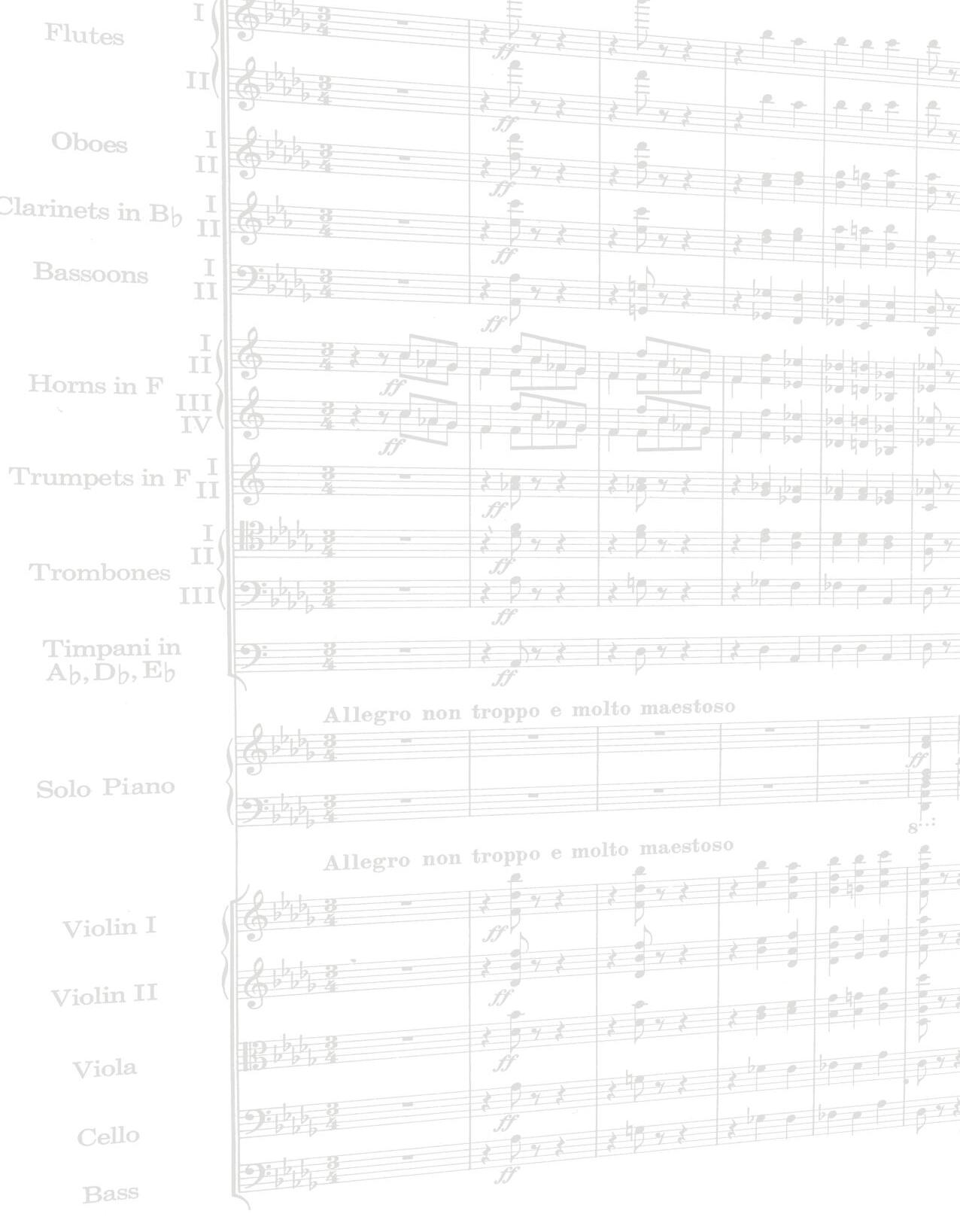
•
• “String Technique – A Guide to Intuitive Sequencing” – Scott Krijnen
“Top Ten Easy Ways to Improve Your String Orchestra Sound!” –Albert Jeung
In addition to these great clinics, be sure to attend the CODA General Session. We will have an interactive discussion with a panel of string experts: “Everything You Wanted to Know About Strings But Were Afraid to Ask.” This session will also be a great way for you to connect with your fellow orchestra director/string teacher colleagues.
Also, be sure to attend performances by the Hopkins Junior High School Advanced Orchestra directed by Gregory Conway, Thursday at 4:30 p.m. and the Cal ATSA Solo Recital, Saturday at 5 p.m. This recital will feature the California American String Teachers Association solo competition winners. CASMEC 2017 is going to be bigger and better than ever. Hope to see you there.
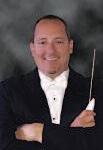




“Are You Using the Newest F inale like it is F inale 2000?” - L eigh Kallestad
“Enhancing Musical L earning and Creativit y Using littleBits S ynth Kits” - Tamara Thies and Lisa Voss
“ iPad Pro for Music Directors and their Classrooms” - Cameron Brown
“Online Assessment – Make Your Job Easier & Hold Your S tudents Accountable” - Jenny Amaya and Julie Bounds
“S ightReadingFactor y com: Revolutionizing How You Teach and Practice S ight-Reading and S ight-S inging ” - Don Craf ton
“ Technolog y Integrated Large Ensemble: iPads in the Rehearsal Experience” - Jessica Vaughan-Marra
“ Web 2.0 and You” - Ryan U bhoff
“Choosing Music for Your Jazz Ensemble: Best Practices in Choosing That Promotes Rich L earning ” - David Beatt y “JASS: Jab at S wing and S t yle” - Dr David Betancourt
“JazzGir ls – S trategies for Increasing Participation of Gir ls in Jazz” - S arah Cline
“Musical F luenc y – A New Method of Understanding and Creating Music ” - Roger Treece “S tart Your Engines: Building Confidence with L ess Experienced Rhythm S ection P layers” - Mike Kamuf
“Using Improvisation in Teaching the Jazz Ensemble” - Gregor y Christiansen Gregory Christiansen
by Lily Chen-Hafteck
CMEA World Music Representative
Wor ld music will again be featured in the 2017 CASMEC Ten c linicians, inc luding music educators coming all the way from China and F inland, will gather at S an José in room 213 of the convention center between Febr uar y 16–18 They will share their experiences in teaching wor ld music with the CMEA members They are all eager to bring par ticipants to the wor ld of diverse musical cultures from different par ts of the wor ld such as China, F inland, Japan and Mongolia They will also show us how multicultural music education can be applied to all areas of music education, inc luding band, vocal and general music c lasses, as well as a research repor t on Asian-American students’ learning st yles in applied music studios.
In this ar tic le, the presenters extend their personal invitations to the CMEA members I hope these will give you a glimpse of the exciting program that we have prepared for you and an “appetite” to come and join us in Febr uar y
The wor ld music sessions will star t on Thursday, Febr uar y 16 at 12:45 p m with Christopher Mena and Giuliana Conti, who are the graduate students at the Universit y of Washington, S eattle Both of them study with the internationally renowned multicultural music education scholar, Dr Patricia Campbell They will present a session: “But I Teach Band! Incor porating Wor ld Music Resources into your Rehearsals.” They will repeat their presentation on S aturday, Febr uar y 18 at 8:00 a.m. Here is their invitation:
“ This workshop will focus on incor porating wor ld
music into instr umental ensembles Par ticipants will learn about musical resources, how to engage students through wor ld music pedagog y methods, and things to consider when selecting music as regards supplementing the existing concer t reper toire All music teachers with an interest in wor ld music are ver y welcome!”
On Friday, Febr uar y 17, we star t ear ly in the morning at 8 00 am when Dr Zhihong Ren, a Chinese professor from Hebei Normal Universit y will bring us the sights and sounds of China Her session, “ The Use of Chinese Traditional Folk S ongs in School-Based Curriculum,” will feature her work in bringing traditional songs to the school. China is a vast countr y with many different regions and ethnicities, each with its own dialect and culture. In modern China, many young students do not know their traditional ethnic music anymore. Therefore, it is an impor tant initiative that she wishes to share with the par ticipants In her own words:
“I will introduce the use of Chinese traditional folk music in school teaching I will use Chinese T ibetan folk songs as an example Chinese T ibetan folk songs are sung with a strong rhythmic feeling and accompanied by dance But such ethnic and traditional music is not a par t of the school music curriculum I have attempted to bring such music into primar y and secondar y schools gradually, and it is ver y much welcomed by the students It also helps the students learn the heritage of China If anyone interested in the application of traditional Chinese music, par ticular ly T ibetan folk songs, in school teaching, I will show you ways of using it in the school-based music curriculum.”
Af ter the session on Chinese music, on the same day at 10:30 a m , Dr John L W hitener, associate professor of music education at California S tate Universit y Nor thridge will bring us to go fur ther into the hear t of Mongolia. This is what he said:
W hat does the indigenous folk music of the Mongolian people sound like? W hat kind of singing st yles and instr uments are commonly used? How has the incredible natural beaut y of the countr y influenced these musical practices and st yles? W here is Mongolia?! All these questions and more will be answered as we examine the unique “Music Education of Mongolia,” direct from the land of Genghis Khan.
This seminar is the result of two trips to Mongolia in the summers of 2013 and 2016 and will inc lude many recordings and videos of Mongolian musical practices Come see the famous “ horse head fidd le,” hear Mongolian long song, and experience for yourself the amazing throat singing for which the countr y is so renown S ee the gorgeous beaut y of the Mongolian countr yside alongside the urban sprawl of the capitol cit y, U laan-Baatar From camel riding to horse herding to sleeping in the circular tent called a ger, this seminar will surely give you a taste of Mongolia ”
In the af ternoon of Friday, we will star t with Helga Rut Gudmundsdottir, associate professor of music education at the Universit y of Iceland. At 1:30 p.m., she will present her session, Icelandic children’s songs, rhymes and games – the songs that Björk and S igurros grew up with. S he sincerely invites you to join her:
“In this c linic I will teach children’s rhymes and games based on Icelandic musical heritage. I collected these when I was preparing a parent-infant c lass in Iceland over a decade ago. That venture grew into a method in ear ly childhood music that hundreds of Icelandic families have been a par t of and it is still growing. A par t of the success is the authenticit y of the music and some of the songs that have been preser ved for many generations S o if anyone is curious about the sounds woven into the fabric of Icelandic musical heritage, this c linic will provide some insights as well as some relevant practical applications for ear ly childhood music c lasses ”
Following Iceland, we will then go to Japan At 3:30 p m , I will present a session with Rie Aoyama and Katie Takahashi who are my UCLA student-teachers coming from Japanese families Being a music education scholar who has conducted extensive research on multicultural music education and a music teacher educator who has seen the joy and challenges of bringing wor ld music into the c lassroom, I would like to share my approaches in teaching wor ld music that will enhance a deep understanding of both the music and culture. This is my personal invitation:
“In this presentation, I will collaborate with Rie and Katie in teaching some Japanese songs and dances. This interactive session will get you on your feet and sing in Japanese immediately. We will explore the many genres of Japanese music: singing Japanese children’s songs, examining traditional Japanese musical instr uments, dancing to festival music, experiencing the past and present Japanese music Through these musical activities, we will bring the par ticipants to deepen their socio-cultural understanding of the Japanese music while having some fun-filled activities ready to take to the c lassroom P lease come and join us to the beautiful island of Japan ”
On S aturday, Febr uar y 18, we will star t ear ly at 8:00 a m again As mentioned above, Christopher Mena and Giuliana Conti will repeat their session on incor porating wor ld music into band at that time. Then, at 11:30 a.m., Ross McGinnis, director of instr umental music at the Oakdale Joint Unified District, will present his session, “Building Excellence in Modern S teelbands ” Besides sharing his experiences in organizing and directing steelbands, Mr McGinnis will also bring his ensemble for demonstration at his session
Last but not least, at 2:30 p m on S aturday, J i Hae Lim who is a doc-
toral candidate at USC will present her work, Asian-American students in applied music studios and their st yles of music learning. Ms. Lim received her bachelor and master ’ s degrees from S eoul National Universit y, Manhattan School of Music and Teachers College, Columbia Universit y. S he is keen to invite you all to this research repor t that she will present:
“I taught at New York Universit y as an adjunct facult y in music education depar tment from 2007 to 2009. I currently ser ve as a head of the CAL School of Music and as director of Young Muse Piano Competition O ver the past years, I have learned much about Asian-American students’ music learning st yles and their parents’ musical parenting beliefs and behaviors If you have any Asian-American students in your c lassrooms, you might understand better your Asian-American students and parents and boost their educational enthusiasm af ter attending my presentation ”
As you can see from the above personal invitations of the presenters of 2017 CASMEC wor ld music sessions, we have something really special for you. We plan to give you a wonderful experience of music from the wor ld that you will enjoy and want to bring to your students too. We all look for ward to seeing you there
“Building Auditor y Skills in ALL Students – The Key to Music Literacy” - Cindy Teresi, Janet Thorgrimson, and George Dozet
“Classroom Management - Discipline, Automated Assessments, L esson P lanning and Customization” - Otto Gross
“Differentiation in the Active Music L earning Classroom K– 6” - BethAnn Hepburn
“Feel the Pulse, Hear the Pitch, and Make it Music!” - Jeremiah J. Jacks
“General Music Tools for Connected S tudents and Teachers” - Jenny Amaya
“Guitar Class in High School, An Innovative Approach” - Morris Acevedo
“Headbangers Ball – the Recorder S essions” - Richard Lawton
“Integrating Wor ld Music Drumming into Your General Music or Choral Curriculum” - Kalani Das
“Kinesthetic Connections in the Elementar y Music Classroom” - BethAnn Hepburn
“L eading the Way : Arts Integration S trategies for TK– 6 Music S pecialists” - Elizabeth Robertson and Jennifer Coull
“Music Literac y in the Elementar y Music Classroom” - Esther Hollander
“New Routes to Creativit y through Movement ” - Emily Mason
“S tart Them Ear ly, Improvisation Across the Elementar y Grades” - BethAnn Hepburn
“ Teaching S olfege through S quare Notation” - Christoph T ietz e
“ The Great Transition: S trategies for S upporting Vertical Articulation Between General Music and Beginning Band ” - S arah Van D
“ Wor ld Rhythms Drum and Dance Jam” - Kalani Das
“Earning your National Board Certification in Music ” - Kara Ireland D’Ambrosio, Lisa Cornejo
“From S tudent to Teacher: Resumes, Inter views, and the F irst Year ” - Kelly McCar ley “Instrumental Conducting for Music Education S tudents” - Mildred Y i
“Present on the Podium” - Michelle Jamieson “ Want to Improve Your Teaching? S wipe Right!” - Kathleen Janert y
Announcing an Open Meeting at CASMEC for the Creation of an Urban & Rural Schools Representative to the CMEA Council of Representatives
F RIDAY, F EBRUARY 17 TH , 2017
F AIRMONT H OTEL –R OOM 214
3:30 P. M .
The California Music Educators Association is in the process of creating a new position for the CMEA Council of Representatives. This new position will give unique and particular representation for those music educators who teach in urban or rural schools.
This meeting will be an open forum –for CMEA members and non-members alike –to provide needed input to the creation of this new, critical position within our CMEA organization. This is an opportunity for everyone to share ideas and thoughts about the needs of urban and rural teachers and how CMEA may assist in those efforts.
The goals for this meeting will be to identify the role and purpose of an urban and rural representative on the CMEA Council of Representative, and to solicit CMEA members as possible candidates for the position.
CMEA President Scott Hedgecock has deemed that the creation of the Urban and Rural Schools Representative to be a major objective during his 2016–2018 term. As he has previously stated: “The goal is to identify schools that are outside of our traditional music program realm, who have school-wide challenges that are uniquely different than most suburban schools. It is our goal to reach out to those music educators and let them know that CMEA and NAfME are for them and their unique needs.”

The students of urban and rural schools are poised to be the beneficiaries of our efforts to create a CMEA Urban and Rural Schools Representative. Please Do Attend.
Please contact Dr. Lawrence Stoffel with any questions: stoffel@csun.edu
“A Changing Federal and S tate Landscape: W hat It Means for Music Educators” - Nicholas Chitwood
“Assessment: May the Odds be Ever in Your Favor ” - Wendy Matthews, Karen Koner
“Meaningful and Authentic Assessment S trategies that S upplement Performance Assessments” - Kenneth A Douglas
“Communicating W ith Your Administrator or How To Talk S o Principals W ill Listen” - Rick Ghinelli
“Data is the New Kale” - Patricia Wayne
“Diverse Approaches to Developing a Nontraditional Ensemble” - Danielle Collins
“Getting to Know You(rself ): Mindful Practices for the Music Teacher ” - H. Ellie Falter
“How to S tart a Mariachi Program at Your School” - S ofia Fojas
“How to S ucceed Wearing the Many Hats of a Music Director ” - L eigh Kallestad
“Music Teachers W ho Compose: Considering Activit y Theor y, Creativit y, and Collaboration” - Lisa A. Crawford
“Pain and Injur y Prevention for Musicians” - Nanc y Taylor
“S o You’re The One That W ill Be Teaching the Guitar Class” - Mike Christiansen
“S ongwriting and the Music Classroom” - S tuart Chapman Hill
“ Teaching Music in Inner Cit y L os Angeles” - John L W hitener and Lawrence S toffel
“U kulele: Four strings, S o Many Possibilities!” - Mike Christiansen
“ W hy we ’ re doubling down on music education in S an Diego Unified School District ” - Russ S per ling and Cindy Marten












































Please join us at the 2017 CMEA Awards Gala!
This event is held as part of the California All-State Music Education Conference – CASMEC, on Friday evening, February 17, 2017 at 5:00 p.m.
The gala will be held at Gordon Biersch Restaurant and Brewery, 33 East San Fernando Street, San José (a short walk from the conference hotels and Convention Center).
Come enjoy a wonderful evening to honor our state award winners.
The Awards Gala sold out last year, so order your tickets early!
Tickets can be ordered online through our conference registration page at http://casmec.org/register-for-casmec/
You do not need to be registered through CMEA or for the conference to attend the Awards Gala.
For more information please contact Trish Adams, cmea@calmusiced com

Join today, visit www.NAfME.org/join.

A Sampling of the Many Music Education Activities Taking Place on our State’s College and University Campuses
by Dr. LawrenceF.Stoffel
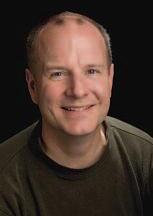
California State University, East Bay
California State University, East Bay Musekiwa Chingodza, Zimbabwean mbira player, visited Cal State East Bay for a workshop and performance on October 26, 2016. Musekiwa

Chingodza was born into a family of great mbira players in Mwangara village, Murewa, Zimbabwe, in 1970. He began playing mbira at the age of five and is self-taught. Through listening to other gwenyambira, or great mbira players, he developed a strong attachment to and love for mbira music. He says: “Our music is both medicine and food, as mbira has the power to heal and to provide for people. Mbira pleases both the living and the dead.” In 1991 Musekiwa was a key member of the band Panjea, founded by Chris Berry. He composed the hit song Ganda on Panjea’s Zimbabwean album. Currently Musekiwa teaches mbira at Prince Edward School in Harare. He is an excellent singer, dancer and drummer and plays both mbira dzavadzimu and nyunga nyunga. Musekiwa is also an accomplished ngoma (drum) player in the Shona tradition, and he excels in playing hosho (gourd shakers), singing, and traditional dance. He is very experienced at teaching all of these skills to North Americans in a friendly and supportive way. Musekiwa has enjoyed many successful North American tours, often accompanied by his friend and mbira partner, Bud Cohen. With his engaging personality, gentle teaching style, virtuoso mbira playing ability and deep immersion in his culture, he is almost always asked to come back for repeat visits.
http://www.csueastbay.edu/class/departments/music/news -events/

The music recording/technology concentration spans four classes through which students learn the musical and technical skills necessary to succeed in the industry. In the process, students gain hands-on experience with range of professional-level hardware and software.
The 57,500 cubic feet live room in the CSUMB Music Hall offers a distinctive and flexible tracking space, which includes a Steinway D grand piano. This space is the mainstay of the music recording/technology component at music and performing arts at CSUMB and is expertly managed and maintained in partnership with hardware and software technicians as well as skilled and knowledgeable staff and students.
Our latest addition, Studio B, is equipped with a 40-input SSL Matrix Console, which allows full DAW control of multiple programs across multiple layers. This studio also features Pro Tools 10 and 11 HD, 14 outboard preamps, and Universal Audio plug-ins along with a selection of additional outboard gear.
In addition to the live room and two control rooms, the Music Hall houses two auxiliary Electronic Music and MIDI labs. These spaces provide separate workstations featuring Korg Triton Extreme and Korg Trinity ProX keyboards, Focusrite 2i2 interfaces, and Macs running Pro Tools 11, Propellerhead’s Reason, and Avid’s Sibelius.
https://csumb.edu/mpa/mpa-recording-studios

Fresno State Music has hired two new professors. Dr. Cari Earnhart has a doctorate of musical arts degree from the University of North Texas and comes to Fresno State from the American University of Sharjah, United Arab Emirates. Her areas of research include Arabic choral music and vocal epidemiology, and she maintains an active conducting and singing career in the US and abroad. Dr. Maria Briggs, an operatic soprano, has sung with Opera Australia, Pacific Opera, Lyric Opera Weimar, and Glyndebourne Opera Festival, UK. She is a recipient of many Australian operatic awards and scholarships, including MIETTA award for best Australian vocal recital performance, and she has recorded numerous recitals and appeared in live broadcasts for Australian Broadcast Corporation.
Dr. Cari Earnhart, director of choral activities, combines careers as conductor, teacher and singer. Earnhart, a mezzo-soprano, began her professional singing career in New York City and has performed professionally as a soloist in the US, throughout the Tuscany region of Italy and in Istanbul, Turkey. Notable presentations include the Performing Arts Medicine Association (2014) and the Texas Choral Directors Association (2016). http://www.fresnostate.edu/artshum/music/
The 2017 Golden Empire Music Festival: Each spring, the Capitol Section of the California Music Educator’s Association runs a series of band, orchestra, and choir festivals, as well as the solo and ensemble festival, at Sacramento State on select Saturdays. Participating groups are from area schools, but it’s open and free to the public to come and watch.
Performances run every half hour from 8:00 a.m. to 5:00 p.m., which a lunch break at the noon hour. Festival dates on the Sac State campus will be: March 4, Solo/Small Ensemble Festival;
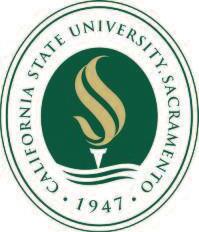
• March 18, Large Ensemble (vocal and instrumental);
• April 1, Large Ensemble (vocal and instrumental);
• April 22, Large Ensemble (vocal and instrumental); and
• April 29th Large Ensemble (vocal and instrumental).
• http://www.csus.edu/music/community/
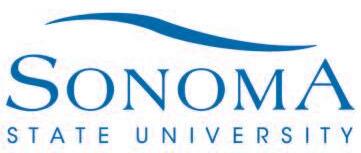
Sonoma State University choir director Jenny Bent has been appointed choral director for the Santa Rosa Symphony. During her two-year appointment, which begins with the 2016–2017 concert season, she will continue to serve as director of choral activities at Sonoma State. In her role as choral director for the symphony, Bent will organize, audition, and rehearse choirs of singers. She will also continue to direct the SSU Symphonic Chorus.
“Given that we are now the resident orchestra of the Green Music Center on the campus of Sonoma State University, we are delighted to have Jenny Bent join the Santa Rosa Symphony for our choral concerts in the upcoming season,” said Santa Rosa Symphony Executive Director Alan Silow. “Her delightful energy and enthusiasm as a choral director will help us build upon the foundation of choral excellence that has been a tradition in our community for many years.”
The symphony has a choral program scheduled this year for its December 3–5 performance and for April 7–9, 2018. Both programs will be performed in Weill Hall at Sonoma State’s Green Music Center.
Bent replaces Choir Director Bob Worth, who held the position from 2002 to 2015 and served as a music professor and choir director at Sonoma State during a portion of that time.
http://www.sonoma.edu/music/spotlight/

If you have an item for a future “Higher Education Happenings” column, please e-mail your item (in 200 words or less) to Larry Stoffel at stoffel@csun.edu. Submissions will be included on a first-come/space-available basis. This column contains items received by submission as well as from culling the Internet.







784






Schuyl

































Brian has been a tour coordinator with EPN Travel Services since 2003, and has been working with student groups for many years. Brian spent he early years his career as a tour director for school groups visiting the Orlando area. past experiences gave him a perspective on what it takes to plan a truly successful trip from start to finish. Brian’s hobbies include coaching his son Robbie’s football team, camping and helping neighbors in his community.
forniCali conic Go over the i Alcatraz, Fisherma ffers friendl o ALS co
Ghiradelli ’ ’sn es P activiti y
I believe that San Francisco and the surrounding area should be at the top of the student destination list. San Francisco is an amazing city that offers a multitude of group friendly activities including Pier 39, Alcatraz, Fisherman’s Wharf, Ghiradelli Square, the California Academy of Science and the Walt Disney Family Museum. Cross over the iconic Golden Gate Bridge and you have Santa Cruz, California’s Great America and two major league baseball stadiums only a short distance away. e San Francisco Bay area really has it all.



























